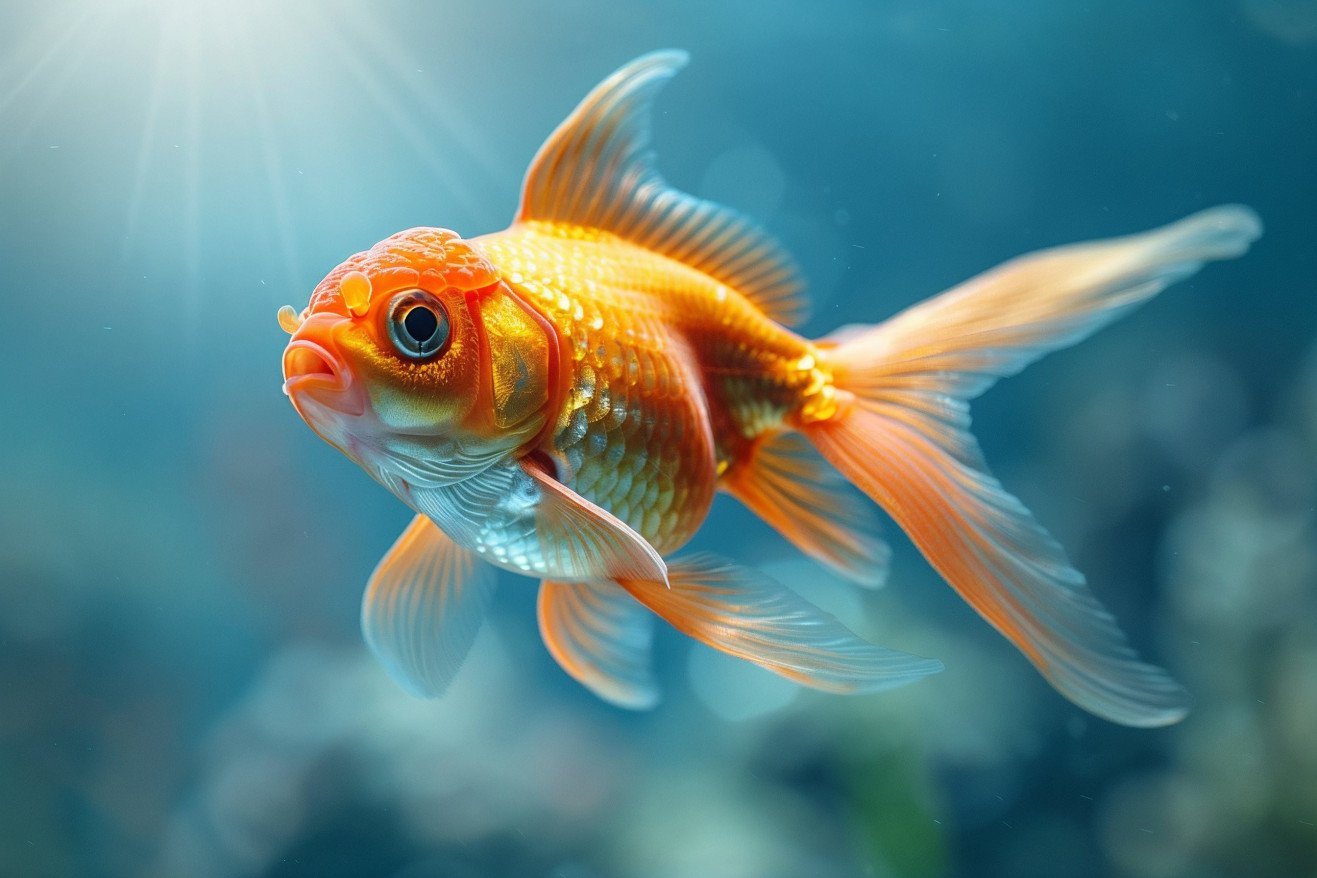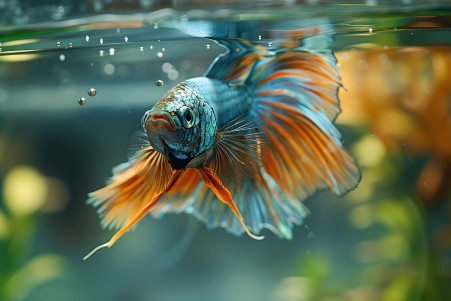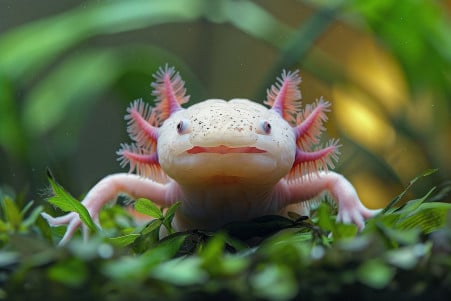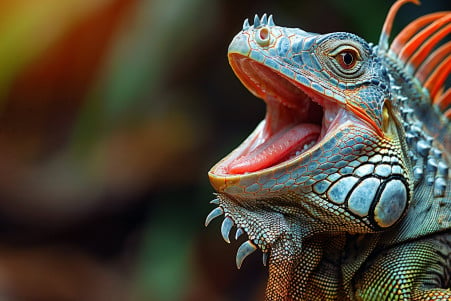Do Goldfish Have Teeth? Inside Their Unique Mouth Structure
25 March 2024 • Updated 27 March 2024

Whether you're about to feed your pet goldfish or just want to learn more about their biology, you may have asked yourself this question: do goldfish have teeth? The answer is no, goldfish don't have teeth. Instead, they have two tooth-like structures called "pharyngeal teeth" in their throat that are used to grind up food.
This article will explore the scientific research on goldfish to explain how their mouths and teeth work. In doing so, we'll learn how goldfish have evolved to eat and digest food and how they've been able to survive for so long. The studies we'll look at come from a variety of disciplines, including ichthyology, evolutionary biology, and even biomimetics, showing that sometimes the best solutions to problems are found in nature. In learning about goldfish's special adaptations, you'll also come to better understand the amazing world of aquatic life that you can find in your own home or in the wild.
Do Goldfish Have Teeth?
The Evolution of Pharyngeal Teeth in Goldfish and Related Species
Goldfish are members of the order Cypriniformes, a highly successful group of fish that lack oral teeth and instead have pharyngeal teeth located in the throat region, as explained in a study published in PMC. This unusual dental arrangement is thought to have evolved because of developmental limitations that prevented the formation of teeth in the oral cavity of these fish.
According to research referenced on Wikipedia, pharyngeal teeth evolved before jaws, as a result of the interaction between the ectoderm and endoderm tissues in the gill slits. A study in PMC suggests that competent ectoderm moved into the gill slits, where it may have interacted with the endoderm to enable the early development of pharyngeal teeth.
Cypriniformes show a great deal of variation in their pharyngeal tooth arrangements. For example, goldfish have a single row of four teeth that are compressed, but other species have up to six teeth that are oriented differently. This variation makes Cypriniformes an excellent group for studying the evolution of complex morphological features like teeth and provides insight into the adaptive radiation that led to the group's success.
Understanding the evolutionary origins and benefits of pharyngeal teeth helps us better appreciate the clever solutions that nature has come up with. The fact that this dental arrangement has been conserved across many different lineages of fish shows that it's evolutionarily important and a major adaptation. As we delve into the regenerative potential and functions of pharyngeal teeth in the sections that follow, the evolutionary history will help us better understand the fascinating biology of the humble goldfish.
Tooth Regeneration and Dental Health in Goldfish
Goldfish are able to regenerate their pharyngeal teeth throughout their lives, replacing any that are lost or damaged with new teeth. Research published on ScienceDaily explains that this tooth regeneration is made possible by stem cells in the tooth-forming tissues of the goldfish, which can differentiate into new tooth cells.
To support healthy tooth regeneration and good dental health in goldfish, it's important to keep their water clean and make sure they have a well-rounded diet that includes a variety of foods. As SantaRosaDentalSLO explains, dental problems like tooth malformation and an inability to grind food properly can occur if goldfish are overfed or fed the wrong foods.
Although goldfish don't need any special dental care, GoldFishDiet suggests that paying attention to their diet and making sure their tank is set up correctly can help prevent potential dental issues and ensure their dental health is at its best. By making sure their pet gets the right care and nutrition, goldfish owners can help their pet's unique pharyngeal teeth continue to do their amazing work.
Pharyngeal Teeth and Their Impact on Goldfish Feeding and Digestion
Goldfish are omnivores and eat a wide range of foods, including dry flakes and pellets, frozen and live foods, and plant-based foods and vegetables. INJAF explains that goldfish don't have teeth in their mouths like humans, but they do have pharyngeal teeth, which are hard plates located at the back of the mouth that are used to grind food before swallowing.
Pharyngeal teeth are essential to the feeding process, enabling goldfish to effectively crush and grind solid food to a paste-like consistency that can be swallowed and digested. GoldFishDiet explains that since goldfish don't have oral teeth, their pharyngeal teeth are the only way they can break down their food before it enters the digestive system.
Pharyngeal tooth patterns can vary between different species of goldfish, and this can impact their dietary needs and how they eat. The Goldfish Food and Feeding Guide suggests that feeding goldfish a variety of foods, including both soft and hard options, can help ensure that their pharyngeal teeth get a good workout and that their dental health is maintained.
Do Goldfish Bite? What to Know About the Risks
While goldfish do have pharyngeal teeth, they are not sharp or strong enough to cause any real damage from biting. Aquarium Fish Mag explains that a goldfish bite is often described as a pinch or tickle and is unlikely to break the skin or draw blood.
That said, it’s important to be careful when handling goldfish, as their bites can potentially lead to bacterial infections or other minor issues. The GoldFish Tank explains that goldfish are more likely to bite if they mistake a person’s finger for food or if they are feeling threatened or stressed in their environment.
To reduce the risk of bites, it’s important to handle goldfish carefully and avoid sudden movements, especially near the mouth. It’s also a good idea to keep your hands away from the mouth area when handling goldfish. By understanding the limitations of goldfish teeth and taking the right precautions, goldfish owners can safely interact with their interesting aquatic pets.
The Amazing Dental Adaptations of Goldfish
The Pacific lingcod's incredible ability to regenerate its teeth has shed light on the tooth replacement process in fish. The species can lose and replace as many as 20 teeth a day, with the oldest teeth being stained red and green and the new teeth being stained green, according to a study in the Proceedings of the Royal Society B.
This fast tooth replacement is essential to the lingcod's hunting behavior, as sharp teeth are necessary for grasping prey. While previous research on fish tooth replacement has been limited to sharks, the discovery of the lingcod suggests that many fish species may be replacing a large number of teeth on a daily basis.
The next step for researchers is to investigate the developmental processes that lead to the differentiation of teeth and taste buds in fish, such as Lake Malawi cichlids, in the hope of identifying pathways that could be targeted to develop tooth regeneration treatments for humans. As Dentistry Today explains, the goal is to stimulate a similar tooth regeneration process in humans, who only have two sets of teeth in their lifetime.
By learning from the amazing dental adaptations of fish, we may one day be able to develop treatments that revolutionize human dental care and oral health. The unique pharyngeal teeth of goldfish and the remarkable tooth regeneration of the lingcod are just two examples of nature's ingenuity, and they continue to inspire and inform scientific research.
Wrapping Up: Insights into Goldfish Mouth Structure
Goldfish have a fascinating and unusual dental anatomy, and their pharyngeal teeth are an adaptation that helps them meet the demands of their omnivorous diet. The fact that they can regenerate these teeth throughout their lives is a testament to the resilience and adaptability of these popular aquarium fish.
Learning about the evolutionary history, functional significance, and dental care needs of goldfish can help us better understand the complex biological processes that make these fish such interesting pets. By providing the right care, diet, and environment, goldfish owners can help ensure that their fish have the best dental health and overall health.
Studying goldfish dental anatomy is not only interesting in its own right, but it also helps us better appreciate the diversity and complexity of nature's solutions.


